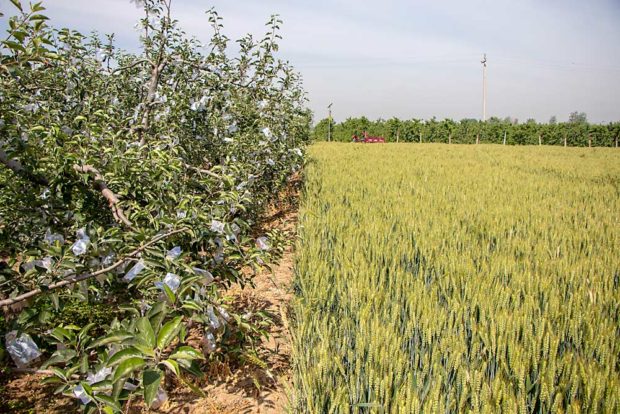
China is a study in contrast and transition.
The Middle Kingdom’s fruit industry is making strides toward modernization, but workers still stand on overturned buckets to thin apples.
Breeding programs are running trials with countless scion-rootstock combinations, but Fuji orchards still stretch to the horizon in most places.
Larger companies have planted high-density systems, but most growers still farm freestanding trees on parcels of 1 or 2 acres, producing low-yield Fujis, bagged by hand to enhance color and protect from pests.
“They’re still growing apples in the traditional way, by and large,” said Mike Willett, the now-retired manager of the Washington Tree Fruit Research Commission.
Those contrasting snapshots are among the perceptions brought back by five members of the Washington fruit industry from a May trip through the production regions of the world’s largest apple producer.
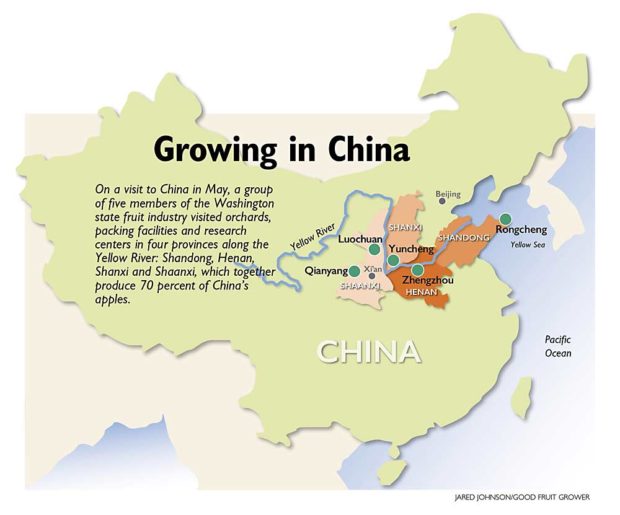
Willett was joined by Stefano Musacchi, endowed chair of Tree Fruit Physiology and Management at Washington State University, Orlin Knutson of Columbia Valley Fruit, Don Gibson of Mount Adams Fruit and Todd Fryhover, president of the Washington Apple Commission. Each traveler arranged his own funding for the trip.
The group visited orchards, packing facilities and research centers in the Shandong, Henan, Shanxi and Shaanxi provinces, which collectively account for about 70 percent of China’s apple production.
The five travelers don’t pretend to be experts after a week or so, but one major takeaway was the sheer scale of agriculture. Trips along the Yellow River gave the travelers views of endless seas of wheat, vegetables and fruit, often planted right next to each other in a patchwork of parcels. That includes apples. In 2017, China produced 41.4 million metric tons of apples, about eight times the U.S. harvest for the same year.
“No plot of land, no matter the size, isn’t planted to something,” Fryhover said.
One of the most important topics is labor, said the visitors. At first glance, China seems tradition-bound, where hand labor still rules. Workers stand on the tippy-tops of ladders or overturned crates to work, and then sort in the field. Packing facility employees, usually women, then re-sort for size and color by hand with ring sizers and individually wrap the apples, cover them with Styrofoam and place them in trays.
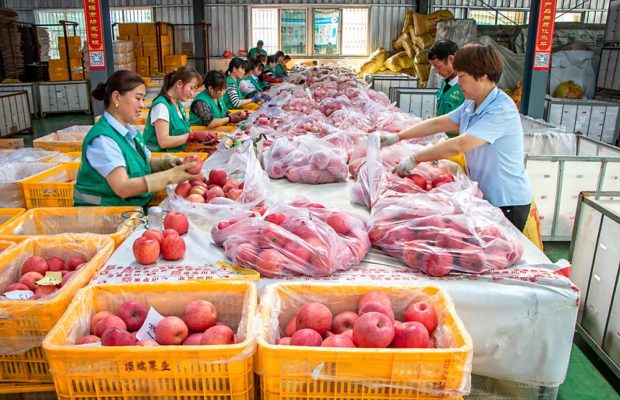
“China has a completely different business model than the USA and Europe,” Musacchi said. “The actual goal in China is to provide jobs for a population of 1.4 billion people.”
However, the country is facing demographic changes similar to those of the United States and elsewhere, with farmers aging and young people moving to cities. The days of wages as low as $15 a day, which have helped fuel the economy, may be waning. Most farms remain small, family-operated parcels, but some large Chinese producers are looking to mechanize and consolidate.
In with the new
Thus, China’s fruit industry also has an appetite for innovation, new varieties and high-density growing systems. The Northwest Agriculture and Forestry University in the Shaanxi Province has a breeding program with more than 50,000 seedlings, fertigation and other technologies, as well as a collaboration with Cornell University. The institution’s group of scientists, many of whom have studied in other countries, publish more than 70 papers per year.
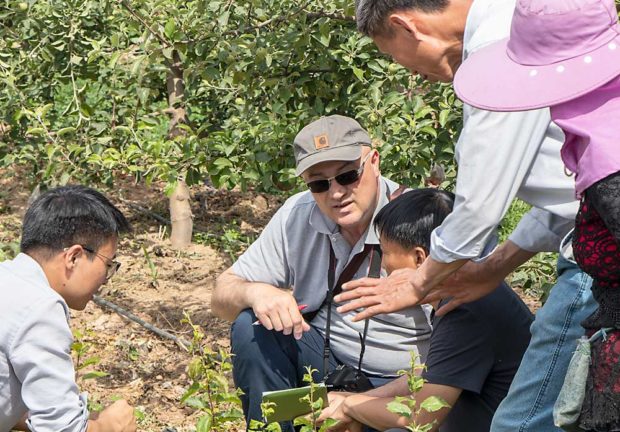
Meanwhile, Henan University has a breeding program that must pay for itself by selling cultivars to growers. A cooperative with 100 growers, representing 133 acres, near Yuncheng, Shanxi, has under-tree drip irrigation, netting and a high-tunnel cherry orchard.
The Fruit Research Institute in Zhengzhou has crosses of Asian and European pears, some with good fruit size and high precocity, Gibson said. “They’re trying to find a longer-storing red pear, and we’re trying to find something that can be eaten today (without ethylene conditioning).”
Some of the visitors brought home one of the more curious innovations they saw: clear plastic bags secured around pears as they hung on the branches. They never found out what the bags were for, Willett said, but pictures indicated they drastically boosted the humidity around the fruit.
Then there’s Haisheng International, a produce company in Shaanxi with 13,000 acres of orchards and a GREEFA packing line with four lanes and 24 drops. But the guides from the progressive producer showed the tourgoers Gala trees under black hail netting, despite temperatures that routinely top 100 degrees Fahrenheit at harvest.
By their own admission, they had been struggling to color the apples and ended up asking the visitors more questions than vice versa.
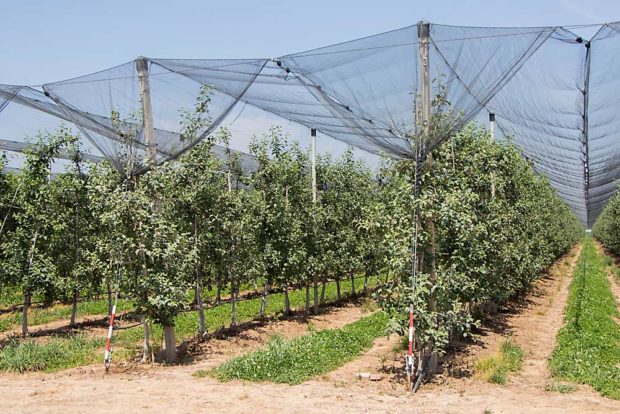
So, change is happening, sometimes in fits and starts, often slowly as the country balances the need for efficiency with employment and demographic stability. However, the visitors’ view of the research institutions demonstrates the Chinese government and its economy have the resources to ramp up in a hurry at any time.
“Chinese growers and research institutions are investing a lot of money in ag research, and they have the capacity and resources to modernize very quickly,” Musacchi said. •
—by Ross Courtney






Leave A Comment